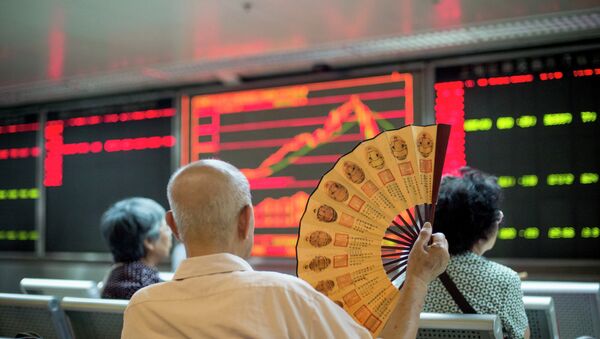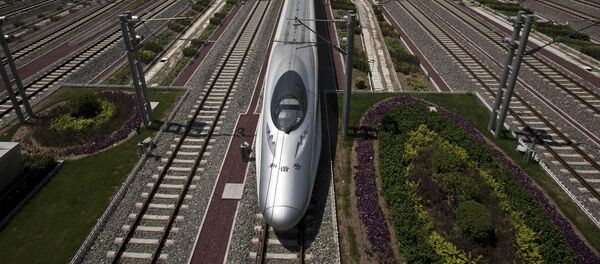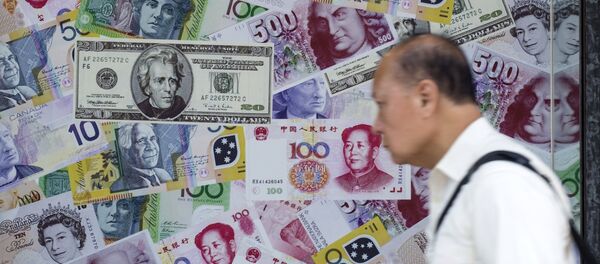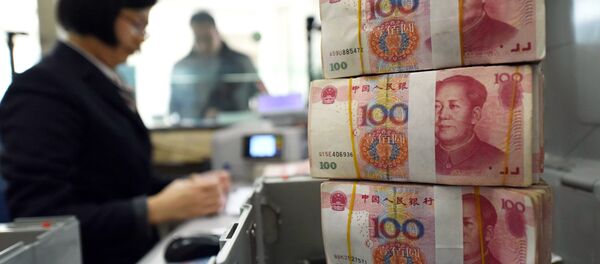In particular, the official referred to Charles Collyns, former Assistant Secretary at the United States Treasury Department. According to Collyns, the Chinese economy will actively grow in the coming 10-20 years.
Recently, many Western media outlets published apocalyptic outlooks for the Chinese economy. In fact, the structure of the global economy is changing, making traditional advantages of the Chinese economic model irrelevant, an article in the Russian online newspaper Vzglyad read.
Beijing is revising its economic strategy to cut dependency on cheap workforce and foreign investment to build factories in China. The new model will focus on the domestic market and its enormous potential for growth.
"Despite all the hand-wringing over the vaunted China slowdown, the Chinese economy remains the single largest contributor to world GDP growth. For a global economy limping along at stall speed – and most likely unable to withstand a significant shock without toppling into renewed recession – that contribution is all the more important," economist Stephen Roach, a senior fellow at Yale University's Jackson Institute of Global Affairs, wrote in an article for Project Syndicate.
"There are the global impacts of a successful rebalancing of the Chinese economy. The world stands to benefit greatly if the components of China’s GDP continue to shift from manufacturing-led exports and investment to services and household consumption," according to the economist.
According to the 13th five-year plan (2016-2020), China’s annual GDP growth should reach over 6.5 percent and imports — $10 trillion.
The Chinese government is ready to accept a slight economic downturn in exchange for structural reforms in productivity and decreasing resource-intensiveness of the economy. As a result, many Chinese companies will stop working and growth will slow down.
As for the ownership structure, there are three main sectors in the Chinese economy, including private companies, companies controlled by regional authorities and state-owned conglomerates. A new economic model is breeding a conflict between Chinese regional elites and the central government. Beijing has pressured local authorities to close ineffective companies but faced opposition.
"Finally, there will be a compromise in this struggle. The question is the terms of this compromise," the article in Vzglyad read.
Economic optimization always means slowing growth. Plus the financial efficiency of the Chinese economy is not enough. If a large number of small and medium ineffective companies are shut down, this will lead to a drop in domestic production and an increase in unemployment rate.
In order to control the situation, the Chinese government is applying noneconomic and economic tools, including correcting the fiscal and monetary policy, a banking reform, improving pension, healthcare and environmental programs.
According to Goldman Sachs, China’s transition to a "new economy" is already giving results. The bank states that the types of goods and services exported by Beijing have changed significantly.
Moody’s upgraded the outlook for Chinese growth in 2016 and 2017 to 6.6 and 6.3 percent respectively.
"The slowdown and rebalancing of China's economy is likely to be gradual. Thus we do not expect China to exert a significant drag on global growth prospects over the rest of 2016 and in 2017," Madhavi Bokil, a senior analyst at Moody's, was quoted as saying by CNBC.
On Thursday, it was reported that China’s manufacturing sector expanded at its fastest pace in nearly two years in August. The official Purchasing Managers' Index (PMI) rose to 50.4 in August from 49.9 in July, and above the 50-point mark that separates growth from contraction on a monthly basis, according to Reuters.
Currently, in terms of GDP, China is the world’s second-largest economy. China is gradually turning into an innovative economy. The current five-year plan presumes large-scale Chinese investments abroad. Chinese investments in other countries are estimated at $1 trillion and are expected to add another $500 billion by 2020.
By the end of the 13th five-year plan, China’s GDP is expected to reach $14 trillion. China will be a lucrative market for global companies and create new possibilities for trade and cooperation, according to Vzglyad.
"All in all, despite all the focus on the US, Europe, or Japan, China continues to hold the trump card in today’s weakened global economy," Roach underscored.








